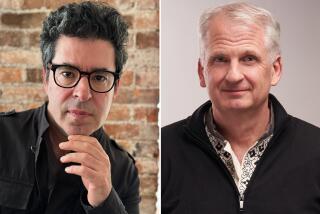What went wrong in Israel? Milton Viorst’s ‘Zionism’ grapples with a fractious history

For years after David Ben-Gurion triumphantly declared its establishment in May 1948, the state of Israel was widely admired around the world as a spirited, resolute and self-reliant young nation — one that rose from the ashes of the Holocaust, that tamed the harsh desert, that beat back five Arab armies when they invaded, that built a liberal democracy in an undemocratic part of the world. If you weren’t a displaced Palestinian Arab, what wasn’t to love?
Today, however, the narrative has changed. In many circles, you’re more likely to hear about Israel’s settlements, intransigence and its nearly 50-year-long occupation of the West Bank and Gaza than you are about its pluck or ingenuity. Some church groups, trade unions and university associations, especially in Europe, have cut ties with the country over its treatment of Palestinians, including its use of force in recent assaults on Gaza. Israel is more popular in the United States than elsewhere, but young Americans are significantly less enamored than older ones. On college campuses, the “apartheid” analogy is common and the Boycott, Divestment and Sanctions movement is gaining ground.
For the record:
2:54 p.m. June 2, 2019This review refers to Israel’s nearly 50-year-long occupation of the West Bank and Gaza. The United Nations, Human Rights Watch and the International Committee of the Red Cross, among others, consider Gaza part of the occupied Palestinian territories; Israel, which withdrew from the region in 2005, and some other scholars reject this characterization.
What went wrong? That’s the unspoken question behind every page of Milton Viorst’s “Zionism,” a smart, analytical, engaging history of the people and ideas that built the state. Viorst, a former Middle East correspondent for the New Yorker, tells the story through the lives of eight preeminent leaders whose perseverance brought the country into existence and shaped its character — Theodor Herzl, Chaim Weizmann, Vladimir Jabotinsky, David Ben-Gurion, the Rabbis Kook (Abraham Isaac Kook and Zvi Yehuda Kook), Menachem Begin and Benjamin Netanyahu. But the unmistakable message of the book is that the Zionist project was derailed somewhere along the line and that only by grappling with its biggest questions can it be put back on track.
For instance: Is it possible for an avowedly Jewish state to offer equal rights and democratic privileges to its Arab citizens? Is anti-Zionism actually just another manifestation of anti-Semitism? How do you separate legitimate security concerns from territorial ambitions? Who bears more of the blame for the failure of 100 years of peace-making efforts, Israel or the Palestinians? Was Zionism — the secular, progressive, Europeanized movement with its roots in Enlightenment rationalism — hijacked and transformed? Could Israel regain its standing in the world by ending the occupation?
What went wrong? That’s the unspoken question behind every page of Milton Viorst’s ‘Zionism,’ a smart, analytical, engaging history
— Nicholas Goldberg on ‘Zionism’
It becomes clear very quickly in Viorst’s book that there is not, and never was, a simple or monolithic Zionist ideology. From Herzl’s earliest days peddling what seemed a nearly unimaginable, fantastical dream — to return the Jews from their diaspora to the land of the Bible after nearly 2,000 years — the movement was riven and undecided about both its tactics and its objectives. Cultural Zionists, socialist Zionists, revisionist Zionists and religious Zionists — each emerging group had different aspirations for the new country. There were ultra-orthodox Jews who believed there should be no Jewish state in the Holy Land before the coming of the Messiah, and secular Jews who thought the rabbis should have no special authority in the new country; Sephardic Jews and Ashkenazi Jews; stetl Jews from Russia and assimilated, educated Jews from Germany and England, each bringing their own baggage, literally and metaphorically. Some Jews believed the new state should include not only present-day Israel but also the West Bank; some believed it should include Jordan as well. Still others believed there should be no Jewish state at all, just a democratic, binational country shared with the Palestinian Arabs.
It is miraculous, frankly, that such a fractious, factionalized group of people scattered around the globe managed the extraordinary task of holding together (through two World Wars, among other things) to see to it that the state was created. And it goes without saying that once Israel was founded, those divisions didn’t simply vanish, but were instead baked into the politics of the new country, where they still exist today.
Of all the divisions, Viorst pays most attention to the split between mainstream Zionists and the so-called “Revisionist Zionists,” led in the pre-state years by the articulate, charismatic Vladimir Jabotinsky. Born in Odessa in 1880, Jabotinsky believed that the diplomatic route to statehood was a “delusion,” and that only arms and force would bring a Jewish state into being. Soldiers in the revisionist Irgun militia engaged in occasional firefights and shootouts with mainstream Zionists and carried out acts of terrorism against both the British and the Arabs. Ben-Gurion, the leader of the Jewish community in Palestine, once referred to Jabotinsky as “Vladimir Hitler,” provoking an enormous row.
Yet revisionism survived. It was Jabotinsky’s disciple, Menachem Begin — in alliance with a growing community of religious Zionists who viewed the West Bank as a non-transferable gift of God to the Jews — who empowered the settlement movement in what he called “Judea and Samaria” after the Six Day War in 1967. And Prime Minister Benjamin Netanyahu himself is a revisionist princeling: His father was secretary to Jabotinsky and was with him when he died. The son’s politics are firmly rooted in revisionism, which, Viorst says, has grown “only harsher” since Jabotinsky’s time. Today’s Israel is “mired in Jabotinsky’s ideals, not Herzl’s … stuck in the Begin era,” writes Viorst.
Viorst is correct that Jabotinsky, Begin, Netanyahu and their followers have made Zionism tougher, more rigid, militaristic and divided. Yet it would be simplistic to blame the revisionists and the religious Zionists alone for Israel’s problems with the Palestinians. It’s not like the mainstream of the movement had been rapidly reaching a rapprochement. Few Zionist leaders — mainstream, revisionist or otherwise — were inclined to think much about the Palestinians’ needs or desires in the early years. Most had come of age in a Europe marked by deadly pogroms or the Holocaust, and were monomaniacal in pursuit of a state to protect the Jews. Ben-Gurion, who emerges from Viorst’s book as the most effective and consequential of the Zionist leaders, was not particularly inclined toward accommodation.
“Ben-Gurion’s focus was not on peace; it was on security, which he based solely on Israel’s military domination of the region,” writes Viorst. “Brilliant as was his life of service, it was marred by his failure to build sustainable ties with the peoples among whom the Jews now lived.”
In the end, Viorst’s book presents only one piece of a complicated history. It is not, for instance, the story of the Palestinians. It has little in it about the legitimate grievances of the Arabic-speaking population or the rise of Palestinian nationalism or about the many mistakes Palestinian leaders have made over the years. For that, look elsewhere.
Nor is this a work of new scholarship. Rather it is a concise history both of the ideas and the events that led Israel to the place it is today. In some places it falls back on a rote chronology of events; it is better when it analyzes, synthesizes and draws historical connections.
These days, prospects for peace seem terribly remote. The dashed hopes of the last few decades — attributable, mostly, to the combined failures of Hamas, the Palestinian Authority and successive Netanyahu governments — have left the two-state solution in grave danger. There’s plenty of blame to go around and there are plenty of reasons for the impasse, but I was struck by Viorst’s description of the opening speeches of the Palestinian and Israeli delegates at the Madrid Peace Conference in 1991, which he covered: The speakers, he wrote at the time, “abused history, abjured self-examination, wallowed in self-pity, preened in righteousness.”
This book, by contrast, attempts an honest, sympathetic-yet-critical portrayal of Israel. That’s tough to do given how overwrought and inflamed the subject is. But until more people on all sides try, it’s difficult to see how the conflict will be solved.
Goldberg is editor of The Times’ editorial pages. He covered the Middle East in the 1990s.
::
“Zionism: The Birth and Transformation of an Ideal”
by Milton Viorst
Thomas Dunne Books: 336 pp., $27.99
More to Read
Sign up for our Book Club newsletter
Get the latest news, events and more from the Los Angeles Times Book Club, and help us get L.A. reading and talking.
You may occasionally receive promotional content from the Los Angeles Times.








